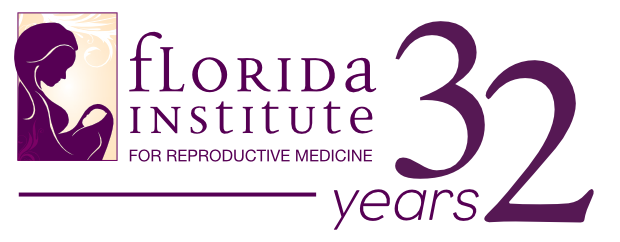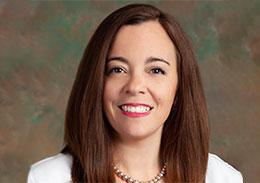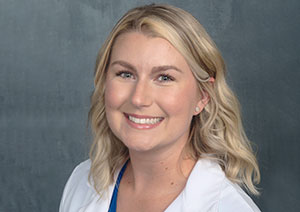Women are born with a certain number of eggs, they never make any more eggs their entire life. At the time of puberty when women start menstruating they have lost over 90% of their eggs having a few hundred thousand remaining. Each month with menses a group of eggs start to develop, only one of which goes on to ovulate. If multiple eggs develop a multiple pregnancy can occur. The remaining eggs that do not mature form scars in the ovary. The whole cohort of eggs is lost each month. Being on birth control pills does not prevent this programmed loss of eggs. As the eggs get older they accumulate genetic/chromosomal errors in response to different environmental insults, i.e., free radicals, alcohol, caffeine, tobacco, chemotherapeutic drugs and other toxins. As a result of the decreased number and quality of eggs fertility rates decrease over time. At age 35 fertility rates drop significantly, by age 40 rates drop drastically. The great majority of women older than 42 will require donor eggs to achieve healthy ongoing pregnancies.
Since the very first IVF pregnancy there have been countless different stimulation protocols to try and get women to produce more and better quality eggs. In my reproductive medicine career spanning almost 30 years, I have reviewed at least 30 different protocols none of which have ever been shown to significantly improve the number and quality of eggs. The only medication that has some evidence supporting a benefit to egg quality has been growth hormone, and this is questionable. Because we have not been able to significantly improve egg number and quality in the low response patient, the stimulation strategy has changed over the last several years to stimulating patients with the least costly option, i.e. low dose gonadotropin protocols or even oral medications. While there is a cost rational for this, in these patients it is critical to get as many eggs as possible. For that reason, in most cases, I will stimulate the patient with a high dose protocol to try and get every egg that is coming along to develop. In the case of repeated IVF failures in the low response patient, the only real solution is that of either donor egg or donor embryo IVF whereby younger, healthier eggs are used.
Kevin L. Winslow, M.D.
Director for Florida Institute for Reproductive Medicine
In terms of evaluating the endometrial cavity, the site of embryo implantation, direct inspection via a hysteroscope offers the most precise information. It also allows us to treat any pathology, i.e., adhesions, polyps, fibroids or a uterine septum. Hysteroscopy gives us information regarding the opening of the fallopian tubes, but does not give us any information regarding the remainder of the tubes.
Hysterosalpingogram (HSG) performed by the injection of a contrast dye into the uterine cavity will detect filling defects, but does not tell us what the pathology is. Hysterosalpingogram also allows us to assess whether the fallopian tubes are patent, as contrast dye can be seen filling and exiting the tubes. By examining the course of the fallopian tube we can get an idea as to whether there may be paratubal adhesions, i.e. the tube is often convoluted with poor dispersion of the dye throughout the pelvis. When the fallopian tube is not a concern sono-hysterosalpingogram can be performed, an office procedure whereby sterile saline is injected into the endometrial cavity and an ultrasound is performed. This technique is more sensitive in detecting endometrial pathology than a regular hysterosalpingogram, but again does not tell us what the pathology is and does not allow for corrections. Sono-HSG is often the screening procedure of choice when the fallopian tubes are known to be patent or have been removed. Will all three diagnostic procedures there is a low chance of infection. The risk of this is significantly higher if the fallopian tubes are blocked. Prophylactic antibiotics are often recommended if tube status is unknown.
Kevin L. Winslow, M.D.
Director for Florida Institute for Reproductive Medicine
Q: Am I going to go through menopause early?
A: No. Each month when you get a period a group of eggs starts to develop. The brain only makes enough fertility hormones that one (rarely two or three, eggs develop hence twins and triplets), but you still lose that whole cohort of eggs coming along that month.
Q: Is there an increased risk of birth defects associated with in vitro fertilization?
A: For the most part, no. We are not changing the wife’s eggs, we are not changing the husband’s sperm, we are simply allowing sperm and egg to unite. So, in general, there is not an increased risk of genetic/congenital anomalies. The exception to this is in cases of very severe male factor (typically counts 2 million or less), i.e., some of these males will have a genetic reason why their counts are so low and pass these genes on. There is a slightly increased risk of congenital anomalies associated with babies born from IVF, this is felt largely due to the increased incidence of multiple pregnancies as a result of transferring more than one embryo.
Q: What to do with our remaining cryopreserved embryos?
A: There are three or potentially four options for embryo disposition.
You can continue to store the embryos and use these to establish another pregnancy. Frequently couples change their mind after 2-3 years and come back wanting another child. The great majority of couples end up using all of their cryopreserved embryos.
Embryos can be donated to the donor embryo adoption program. There are many couples who embryo adoption is an ideal way to start their family. The Florida Institute for Reproductive Medicine has one of the busiest donor embryo programs in the country.
Embryos can be thawed and discarded.
Some couples have opted to donate embryos for stem cell research.
Q: Is IVF painful?
A: IVF fertility shots are given by subcutaneous injections, (very small needle), they are usually described as painful. As eggs develop the capsule of the ovary gets more and more distended, some individuals feel this, they usually describe this as a pressure sensation. Egg retrieval is done under IV sedation, liquid valium makes you very sleepy, you are given a narcotic so that you do not feel pain. If the patient was feeling pain, they would be moving and we would not be able to retrieve their eggs.

[cue the music]
It’s the most won-der-ful time of the year…!
Well, that’s debatable.
The Holidays are stressful even under the most ideal circumstances. But for those experiencing loss, it can be the darkest, most depressing time of year.
Every year around this time, I get flooded with fertility clients all sharing some version of…
- “I feel more depressed than ever right now…”
- “I don’t know why I feel worse than I did 2 weeks ago, nothing’s really changed…”
- “Ugh, I’m such a scrooge…I can’t get into the holiday spirit at all.”
- “I just want to run away and wait until it’s all over.”
Most don’t even understand why they feel the shift.
SO WHY ARE THE HOLIDAYS SO HARD dURING INFERTILITY?
The Holiday Season marks another year without a baby
Another year has passed and it feels like all there is to show for it is 15 extra lbs. from all the hormones and a much smaller bank account.
“What if the only thing that got you through last Christmas or Chanukah was the vision of a baby to celebrate with this holiday season? If that was the case, you probably can’t imagine how you’ll make it through one more childless and chilly winter.” – Merle Bombardieri, MSW
The Holidays are child-centric
The imagery is inescapable: Santa bringing gifts for everyone else’s children, toy advertisements at every commercial, and holiday cards with photos of perfect families invading your mailbox. For goodness sake, even Mary’s miraculous conception and baby Jesus in the nativity can be a trigger.
It can be so difficult to find your holiday cheer when everywhere you turn you see painful reminders of what you don’t yet have.
Unrealistic expectations of bliss and joy
Most of us have an ingrained belief, formed deep in the memories of childhood, that the holidays are filled with a magic that makes all things happy.
Our problems should just fade away, our families should start acting normal, and our mood should suddenly be obnoxiously cheerful.
But unfortunately it’s not that simple, and no amount of holiday music will have the miraculous, sustainable antidepressant-effect that we’re looking for.
So when we aren’t magically transformed into this joyful, festive partying chic, we think: “What is wrong with me?…I’m supposed to be happy…I’m supposed to be cheerful…I’m supposed to want to be around these people also-known-as my family.”
This stark contrast of how we’re “supposed” to feel vs. the current reality can intensify the heavy sadness you feel inside.
So, it’s established. The holidays can really suck during infertility. But there are certain things we can do to make them less painful.
ESSENTIAL TIPS FOR PROTECTING YOUR PEACE, LOVE & JOY
#1 – STOP “Should-ing” on yourself
The raw, painful emotions that you’re battling are hard enough. You can’t necessarily control these feelings, as they’re a natural result of deep loss and fear.
But one thing you CAN do is ignore your inner critic and STOP JUDGING YOURSELF for having these very normal thoughts and feelings.
In order to feel better, we must eliminate all the “I should’s, I need to’s, and I have to’s.
This is my big rule: “If you wouldn’t say it to a friend, then you can’t say it to yourself”
Try it out right now. Read these statements below and imagine that one of your beloved friends has your story. Would you ever tell her:
- “Who cares you just had a miscarriage, you should be happy – it’s Christmas for goodness sake!”
- “You need to cheer up and stop being such a horrible scrooge.”
- “You really need to hide all those feelings, and work harder to make me happy.”
- “You should want to hang out with your insensitive family and love holding all those babies that aren’t yours.
- “You really need to get it together and enjoy the holidays”
So, would you say that???
Of course not. So why is it okay to say it to yourself?
If you get one thing from this post, get this…Start talking to yourself like a best friend. You deserve it.
#2 – Be selfish and do what you want
I know you are already balking at this one. “But, my mom…, I can’t skip…, They’ll be so mad if I don’t…That would be so wrong!”
Take a deep breath.
I want you read the questions below, close your eyes and visualize exactly what your holiday might look like if you could have it exactly your way. Really let yourself dream for a couple minutes.
What would it be like to not be a slave to other people’s rules and traditions?
Where would you go or not go?
Where would you want to stay?
Who do you really want to see? Or not see?
Decorations or not?
Holiday parties? Or a cozy fire and Netflix?
I encourage you to write a list of what came to mind? Then, I beg you to make it happen!
There are no right or wrong answers to how you spend your holidays. Your mom may have a different opinion on that, but isn’t that really just her being selfish and getting what she wants? Hmm…Really think about it for a second.
You are allowed to say no to holiday events and family gatherings that will cause you stress and pain.
Yes, you will likely get some push back from your family, but ask yourself this, “What’s easier to tolerate, hearing their criticism about your absence, or being around insensitive comments about your fertility while stuck knee deep in other people’s kids?”
You’re going through a really hard time, and you deserve to create (without guilt) your version of what a happy-as-possible holiday looks like.
#3: When attending an event, have a protective game plan:
I love Monica Ashton’s list on this:
- You probably already know who you might have awkward encounters with at the gathering. Preplan what you need to do to take care of yourself and avoid those that are insensitive.
- Have someone you trust speak to the typical offenders prior to the party. Have that trusted person explain to them that you do not wish to talk about having children or fertility treatments, etc.
- Arrive late and leave early, to plan around children opening presents
- Upon arrival find those that you enjoy having conversations with and stick with them throughout the evening.
- Cut off any uncomfortable conversations or change the subject quickly.
- Preplan any answers to statements that are insensitive or offensive.
- Request from the group, if possible, that if they are planning any baby announcements that they let you know prior to the event.
- Have a signal for your spouse/partner to alert them that you are ready to leave.
- Stay in a hotel instead of a family house
#4 – Embrace Online Shopping
Do yourself a favor and avoid the toy store, the long lines of kids waiting for Santa, and experience the gift that is Amazon. Why not even treat yourself and get it pre-wrapped too!
#5 – Beware of Christmas Cards and Social Media!
If you felt sick every time you ate at a certain restaurant, you’d stop eating there, right? I want you to take the same care here and start filtering what you allow your eyes to see that will inevitably trigger painful emotions.
Seeing all those Christmas cards and endless social media posts of all of your friends’ kids can be torture. So, set those cards aside for another time (or even throw them out) and block those feeds!
#6 –Lastly, remember that this season is only temporary and it won’t last forever.
If you have gotten this far, you are probably deep in the camp of “All I want for Christmas is for it to be over.”
We can’t make the pain of infertility miraculously disappear during the holidays. Man, do I wish we could.
But by knowing that the holiday blues are to be expected and making a plan on how to best take care of yourself, you can definitely improve your chances of not dreading it quite so much and maybe just maybe, experience some genuine moments of peace, love, and joy this holiday season.
It’s almost over, and a new year is coming, friend.
Much love,
Dusty
In October of 2012, ASRM made the revolutionary announcement that egg freezing was no longer considered an experimental procedure. “Oocyte cryopreservation is an exciting technology, no longer being considered experimental. Pregnancy rates and health outcomes of the resulting children are now comparable to those of IVF with fresh eggs,” said Eric Widra, MD, Chair of the Society for Assisted Reproductive Technology (SART) Practice Committee.
FIRM has been performing oocyte cryopreservation services for many years. Women may choose to freeze their oocytes for a variety of reasons:
- Women seeking to delay childbearing, or wishing to pursue fertility treatment at a later date, can electively freeze oocytes affording them additional flexibility as fertility decreases with age.
- Patients with a recent cancer diagnosis may wish to preserve their oocytes if they are scheduled to have radiation or chemotherapy, which may damage oocytes.
- Women with a variety of other medical conditions that require gonadotoxic (egg damaging) treatment may also benefit from oocyte cryopreservation.
- For personal reasons, some women undergoing IVF may elect to freeze extra eggs instead of inseminating all of the eggs and freezing embryos.
- Women with a family history of early menopause or premature ovarian failure may also wish to freeze eggs.
The egg freezing process requires self-administration of fertility injections to stimulate the ovaries. Once the ovaries have responded, the eggs are harvested during an outpatient surgical procedure. FIRM offers egg freezing technology (also called oocyte vitrification) to preserve the unfertilized, mature eggs for future use. Vitrification uses a specific cryoprotectant that protects eggs from injury during the egg freezing/thawing process. More than 70% of eggs survive freezing and thawing, and a similar amount will be successfully fertilized.
The process for seeking assistance with oocyte cryopreservation is simple and begins with a FIRM physician consultation. The physician will obtain a thorough history, discuss treatment options and review the screening requirements. Some of the cost of this procedure may be covered by your insurance. Please contact us for more information about insurance coverage and financing options.
Polycystic ovary syndrome (PCOS) is a condition that causes irregular menstrual periods and high levels of androgens (male hormones) in women. The high male hormone levels can sometimes cause an increase in facial hair growth, acne, and/or male-pattern hair thinning. The condition occurs in about 4 to 6 percent of women. Some women with PCOS are overweight or obese, and they are at higher than average risk of developing type 2 diabetes. For women with PCOS who want to become pregnant, hormone pills or injections are often needed to help women ovulate. In some cases, weight loss alone can help ovulation. The cause of PCOS is not known and it is thought to be a common, genetic disorder, as are conditions such as asthma and type 2 diabetes. Such common diseases appear to have many causes in which a variety of genes interact with environmental factors to produce disease. Studies in families have demonstrated the heritable nature of PCOS. Large genetic studies have attempted to discover genes that influence whether or not a patient is susceptible to developing PCOS. Recently, a more sophisticated type of genetic testing has been performed providing more clues to the varied causes of PCOS and what genes influence whether or not someone develops this condition or not.
Family studies demonstrate that PCOS is significantly more prevalent among family members than in the general population. Among first-degree female relatives of 93 patients with PCOS, 35% of premenopausal mothers and 40% of sisters were also affected with the disorder. These affection rates are significantly higher than the 4 to 6% observed in the general population. In another study, 115 sisters of 80 women with PCOS were evaluated; of these, 22% met criteria for PCOS. Brothers of women with PCOS also have elevated levels of male hormones.
Efforts to identify genes that influence PCOS susceptibility have largely utilized something called the candidate gene approach, resulting in over 155 publications over the past decade. Despite repeated attempts to identify the genes responsible for this disorder, the PCOS gene(s) remain unknown. Despite many positive studies, no gene has clearly been shown to be the most important in PCOS, and many positive results were not confirmed in subsequent studies. Studies of the genetic causes of PCOS have been hampered by various limitations some of which are challenges inherent to any common genetic disease and others unique to PCOS.
An attractive method of gene discovery for genetic diseases is to use whole-genome approaches that require no prior knowledge or assumption regarding the underlying causes of disease. The main challenge in conducting this type of genetic study that is different than the candidate gene approach is the need to study large numbers of patients, in the thousands. This type of study was performed in Han Chinese PCOS women demonstrating certain gene locations that were associated with PCOS. A subsequent replication study evaluated these gene locations in a European cohort and two of these locations were also associated with a susceptibility to PCOS in the European group.
Methodological flaws have led many to lose faith in PCOS genetics. Improvements in study design as well as a higher number of patients studied and technological advances allowing more in depth genetic evaluations will eventually lead to success. We believe that lessons learned from genetic studies will improve our understanding of this extremely common disorder and allow more effective measures for prevention, diagnosis, and treatment.









